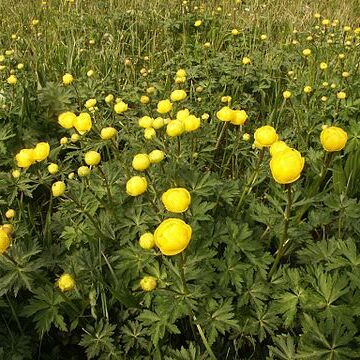Herbs perennial, glabrous, with fibrous roots. Leaves all basal, or basal and cauline, simple, palmately parted or sect. Flower solitary, terminal or few in a cyme. Sepals 5 to many, usually yellow, rarely purplish, obovate, petaloid, usually caducous, rarely persistent. Petals 5 to many, linear, shortly clawed and with nectary pit above base. Stamens numerous; anthers ellipsoid or oblong, filaments narrowly linear. Follicles 5 to many, with branching transverse veins and a persistent style. Seeds subglobose, smooth.
Sep 5 or more, large, petaloid; pet none; staminodes numerous, shorter than the stamens, nectariferous at the base; stamens very numerous; filaments slender; anthers linear; pistils several to many; style subulate; follicles thin-walled; perennial herbs with alternate, palmately cleft lvs and large, solitary, terminal fls. 30, 3 in N. Amer., the others Eurasian.

